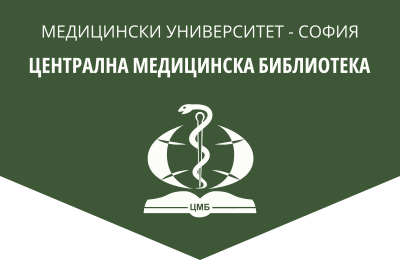Antithrombotic medication in pregnant patients with inherited thrombophilias and previous placenta mediated diseases and its effect on pregnancy outcome
Medical Review (Med. pregled), 2023, 59(3), 21-28.
K. Neykova, V. Dimitrova
State University Hospital “Maychin Dom”, Department of Obstetrics and Gynaecology at Medical University – Sofia
Abstract. Introduction. Low-dose aspirin (LDA) and low-molecular weight heparin (LMWH) have been widely used to improve pregnancy outcome in patients with previous placenta-mediated diseases (PMDs). The presence of inherited thrombophilias (ITs) could be another risk factor for a future unfavorable pregnancy outcome. Aim of the study. The aim of the study was to compare the role of antithrombotic medication (AM) with LDA and/or LMWH in high risk for PMDs pregnancies in patients with and without ITs. Materials and Methods. We studied 169 pregnant patients with previous PMDs, divided into two main groups: the first study group of 84 patients was with previous PMDs and proven ITs (SG1), while the second study group of 85 patients was with previous PMDs but without ITs (SG2). SG1 was further subdivided into 3 subgroups according to the type of applied AM: a subgroup of patients on LDA (SG1-LDA), a subgroup of patients on LMWH (SG1-LMWH), and another subgroup on AM both with LDA and LMWH (SG1-LDA+LMWH). SG2 was also further subdivided into a subgroup on AM only with LDA (SG2-LDA), only with LMWH (SG2- LMWH), and on AM both with LDA and LMWH (SG2-LDA+LMWH). In each of the subgroups we studied the following indices of pregnancy outcome: the rate of cases with spontaneous delivery (SD), preterm birth (PB), abruption of the placenta (AP), as well as the number of cases with a C-section (CS) ‒ total number and number due to fetal distress, and last but not least – the rate of cases with early termination of pregnancy (TOP). Results. The rate of PB was 20% in SG1-LDA, 37.2% in SG1- LMWH, and 55.6% in SG1-LDA+LMWH. The percentage of PB was 38.5% in SG2- LDA, 54.8% in SG2-LMWH, and 4.7% in SG2-LDA+LMWH. The CS frequency was 60% in SG1-LDA, 95.3% in SG-LMWH, and 91.7% in SG1-LDA+LMWH. CSs were further 71.8% in SG2-LDA, 4.3% in SG2-LMWH, and 16.7% in SG2-LDA+LMWH. The percentage of ТОР was 4.7% in SG1-LMWH and 8.3% in SG1-LDA+LMWH, with the lack of such cases in SG1-LDA. The rate of ТОР was 2.6% in SG2-LDA, with the lack of such cases in SG2-LMWH and in SG2-LDA+LMWH. Conclusion. During our study LDA proved to be the cheapest, the most easily applied of the three possible types of AM, as well as with the smallest percentage of side effects. Therefore, we consider that AM with LDA is the most suitable for the prophylaxis of future pregnancy outcome in patients with previous PMDs and with ITs.
Key words: antithrombotic medication, preterm birth, Caesarean section, fetal distress, termination of pregnancy
Address for correspondence: Konstantsa Krassimirova Neykova, MD, PhD, e-mail: neykovaconstantsa@yahoo.com
